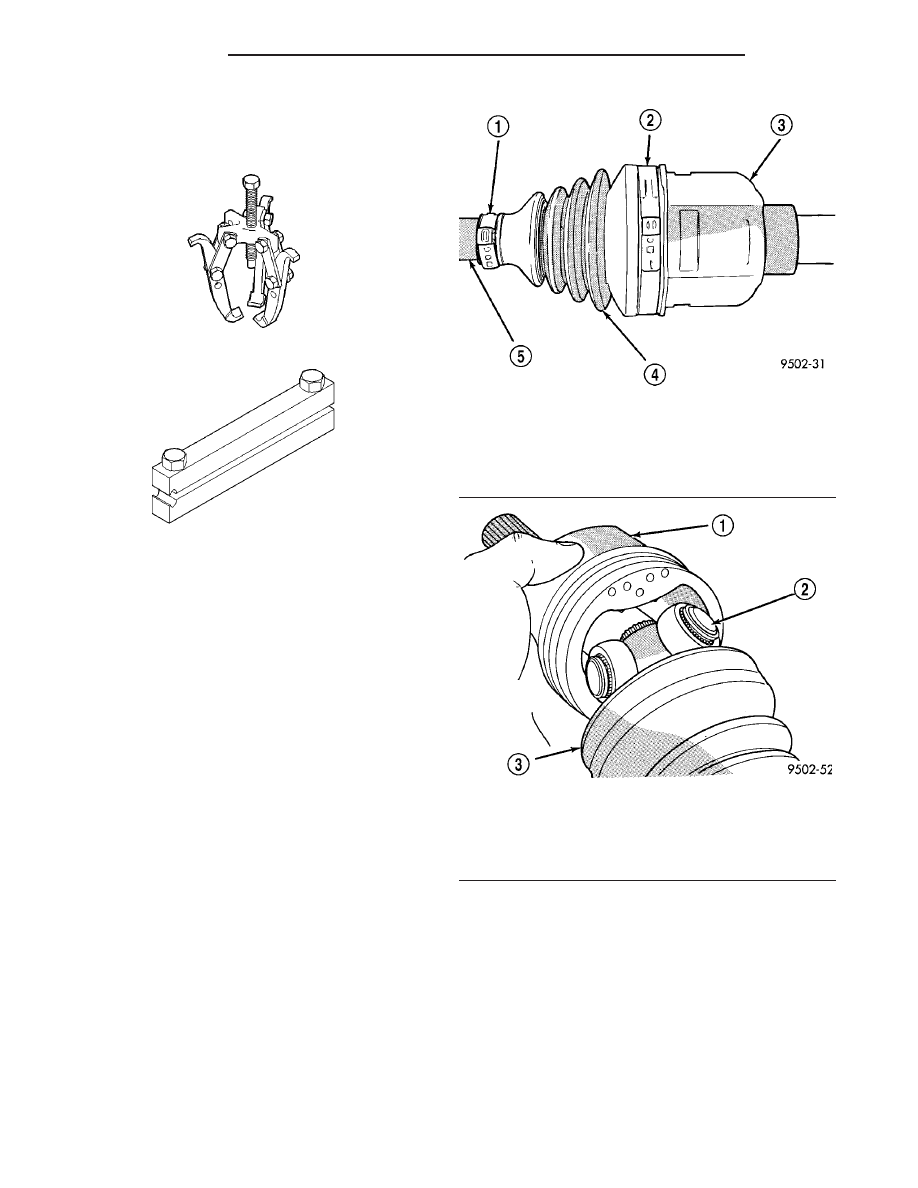Dodge Neon / Neon SRT-4. Manual - part 27

SPECIAL TOOLS
HALFSHAFT
CV BOOT - INNER
REMOVAL
To remove sealing boot from halfshaft for replace-
ment, the halfshaft assembly must be removed from
the vehicle. (Refer to 3 - DIFFERENTIAL & DRIV-
ELINE/HALF SHAFT - REMOVAL)
The inner tripod joints use no internal retention in
the tripod housing to keep the spider assembly in the
housing. Therefore, do not pull on the interconnect-
ing shaft to disengage tripod housing from transmis-
sion stub shaft. Removal in this manner will cause
damage to the inboard joint sealing boots.
(1) Remove the halfshaft requiring boot replace-
ment from the vehicle. (Refer to 3 - DIFFERENTIAL
& DRIVELINE/HALF SHAFT - REMOVAL)
(2) Remove large boot clamp that retains inner tri-
pod joint sealing boot to tripod joint housing (Fig. 28)
and discard. Then remove small clamp that retains
inner tripod joint sealing boot to interconnecting
shaft and discard. Remove the sealing boot from the
tripod housing and slide it down the interconnecting
shaft.
CAUTION: When removing the spider joint from the
tripod joint housing, hold the rollers in place on the
spider trunions to prevent the rollers and needle
bearings from falling away.
(3) Slide the interconnecting shaft and spider
assembly out of the tripod joint housing (Fig. 29).
(4) Remove snap ring that retains spider assembly
to interconnecting shaft (Fig. 30). Remove the spider
assembly from interconnecting shaft. If spider assem-
bly will not come off interconnecting shaft by hand, it
can be removed by tapping spider assembly with a
brass drift (Fig. 31). Do not hit the outer tripod
bearings in an attempt to remove spider assem-
bly from interconnecting shaft.
(5) Slide sealing boot off interconnecting shaft.
(6) Thoroughly clean and inspect spider assembly,
tripod joint housing, and interconnecting shaft for
any signs of excessive wear. If any parts show
signs of excessive wear, the halfshaft assembly
Puller 1026
Boot Clamp Installer C-4975A
Fig. 28 Inner Tripod Joint Sealing Boot Clamps
1 - SMALL CLAMP
2 - LARGE CLAMP
3 - INNER TRIPOD JOINT
4 - SEALING BOOT
5 - INTERCONNECTING SHAFT
Fig. 29 Spider Assembly Joint Removal from
Housing
1 - TRIPOD JOINT HOUSING
2 - SPIDER ASSEMBLY
3 - SEALING BOOT
3 - 12
HALF SHAFT
PL/SRT-4
HALF SHAFT (Continued)